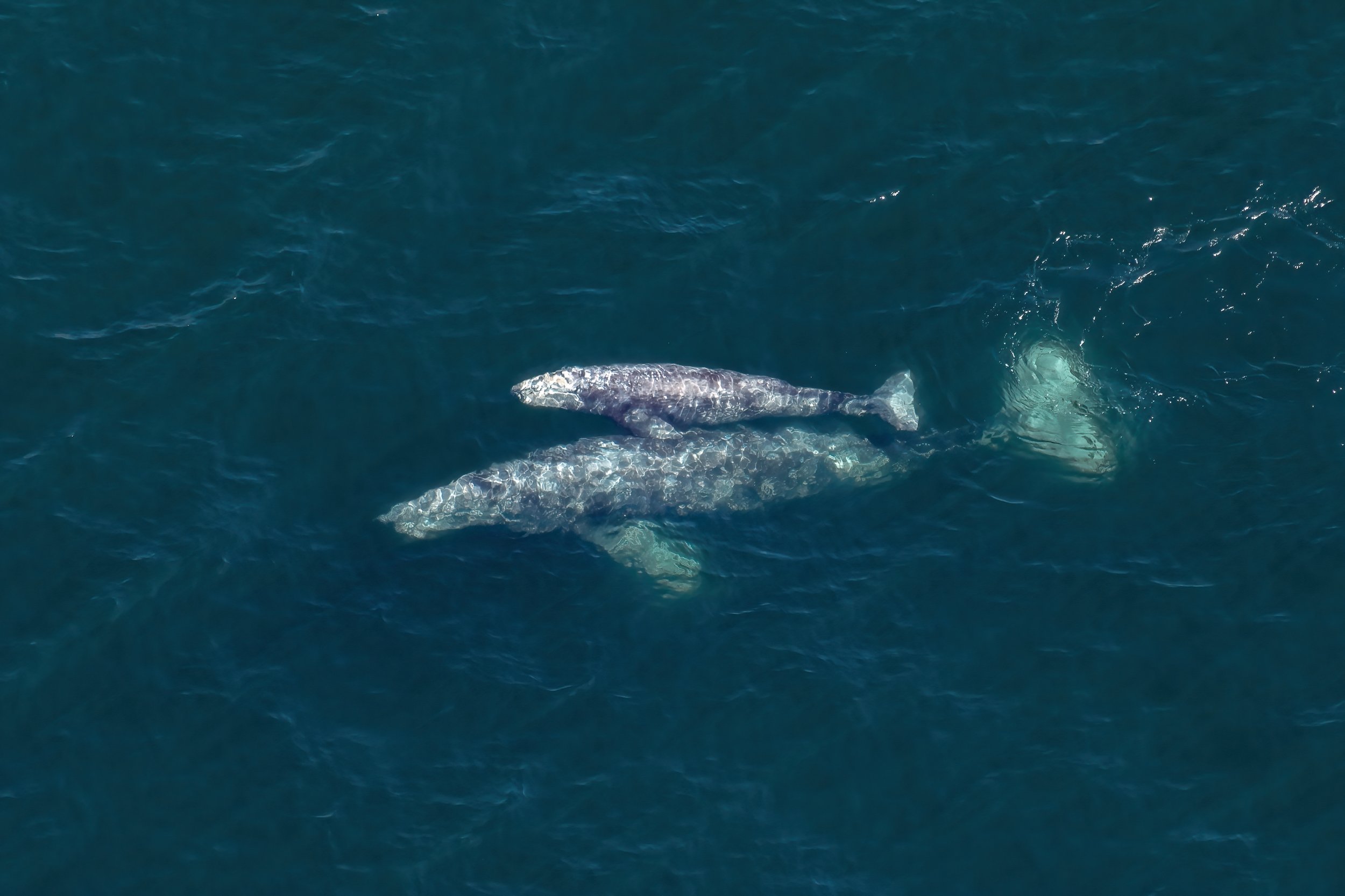While Pacific Gray Whales are Still In Decline, Increased Numbers of Mother and Calf Pairs Are a Hopeful Sign of Rebound
Written by Alex Baumhardt
Originally published by Washington State Standard
Gray Whale, Little Patch/CRC-53, lunging after feeding in Saratoga Passage off Whidbey Island (Photo: Sara Montour Lewis / Our Wild Puget Sound)
The North Pacific gray whale population is down 46% in the last seven years, but healthier mothers and more calves could be signs of a rebound
The number of Pacific gray whales that pass the Oregon Coast each year has declined for the seventh year in a row, scientists found, but the number of healthy mothers with calves is beginning to rise for the first time in five years, offering signs of hope for a recovery.
The most recent count of eastern North Pacific gray whales, which migrate between birthing grounds in Baja, Mexico and feeding grounds in Alaska each year, was undertaken by scientists at the National Oceanic and Atmospheric Administration. They found the population has declined by more than 2,000 since 2022.
The population today is down 46% since 2016, when scientists estimated it to be about 27,000. Today, they estimate the population of Pacific gray whales is closer to 14,500, the lowest count since reporting began in 1994.
The primary suspect for the large decline during the past seven years is climate change and its impacts on the whales’ feeding grounds in Alaska, scientists have reported. Whales do the bulk of their feeding in the Arctic on amphipods, small, spineless crustaceans that look similar to shrimp and live near the sea floor. Those crustaceans rely on algae living on ice to die and fall to the seafloor for their own survival. With less ice, there is less of that algae and the food chain is disrupted.
A gray whale mother and calf swimming along the eastern Pacific Ocean (Photo: Travis Potter)
Signs of a rebound
Despite the decline, NOAA scientists in Baja found that gray whales in area lagoons are larger and healthier this year than in years prior. And for the first time in five years, the number of mothers with calves has increased.
Aimée Lang, a NOAA research biologist who helped lead this years’ gray whale count, said she is cautiously hopeful.
“They’re seeing more whales and better body condition, and that’s really an important indicator because we know that females that are in poor body condition don’t reproduce or they don’t reproduce successfully,” she said. “Having more whales in good body condition suggests there’s going to be more whales to get pregnant and have calves next year, hopefully.”
Lang said scientists don’t know exactly what changed to spur the healthier bodies and higher number of calves, but typically the food supply plays a major role.
“Now that the abundance of gray whales has declined, the number of animals trying to feed on those resources has declined. So presumably, that means the whales that have survived have more food to eat,” she said. But, the scientists have not been able to draw any conclusions yet.
NOAA scientists have also counted fewer dead or stranded whales in Mexico and along the West Coast on their journey northward this year between February and May than in previous years. In 2019, the agency declared an “unusual mortality event” when 120 dead gray whales washed up on West Coast beaches. In the years that followed, about 600 whales washed ashore, appearing to be malnourished, according to scientists. Earlier this year, three gray whales washed up on Oregon beaches within two weeks, and in June, five gray whales washed up on shores in Washington. Most were malnourished. So far this year there have been 63 dead gray whales found on shores between the Baja and Alaska, according to NOAA data.
Whale populations have gone through big fluctuations in the past, including a 25% drop in 1999 and 2000. But Lange said this is exceptional.
“I think what’s different about this event is that it’s gone on for a greater number of years and the magnitude of it has been higher than the drop we saw in the early 2000s,” she said.
NOAA scientists will release another report in the coming weeks that includes estimates of the mother and calf pairs that migrated north this spring. Lang said the raw numbers appear to be up, but there are variables that have to be included in the analysis and official estimate.
“We don’t want to get too ahead of ourselves,” Lang said. “The signs are small so far, but if they continue, I think we’ll be on a good track and the population will hopefully get back to the numbers we used to see not terribly long ago.”


